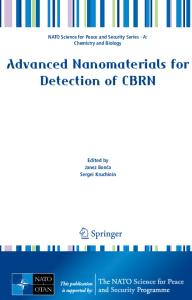Phase transformations in Ti-6Al-4V- x H alloys
- PDF / 1,051,546 Bytes
- 11 Pages / 612 x 792 pts (letter) Page_size
- 5 Downloads / 363 Views
N
TITANIUM and conventional titanium alloys have a high affinity for hydrogen and are capable of absorbing up to 60 at. pct hydrogen at 600 ⬚C, and even higher contents can be alloyed with titanium at lower temperatures.[1] The fact that hydrogen can be added by exposing the titanium samples to a hydrogen environment at elevated temperatures and can then be easily removed by a simple vacuum annealing makes it a unique temporary alloying element.[1–12] Hydrogen as an alloying element changes the phase compositions and kinetics of the phase transformations in titanium alloys, allowing novel thermal and thermomechanical treatments. As a result, novel microstructures and enhanced mechanical properties can be obtained after the thermohydrogen processing (THP).[1–12] At sufficiently high hydrogen concentrations, room-temperature embrittlement provides an economic method for the production of titanium powder (the hydride-dehydride (HDH) process), with the hydrogen then removed by a simple vacuum anneal. Temporary alloying of hydrogen with Ti-6Al-4V, the most popular ␣ ⫹  alloy accounting for more than half of all titanium sales, has been of interest in a number of investigations,[10–18] because improved workability and refined microstructures can be achieved, which are not possible otherwise.[1,10–12,19,20] An improvement in superplastic forming of Ti-6Al-4V has been achieved by temporary alloying with hydrogen.[13,17,21] A reduction of 30 pct in flow stress or a lowering of the forging temperature by 80 ⬚C using 13 to 16 at. pct hydrogen has been reported by Kerr et al.[10] Zwicker et al. J.I. QAZI, Postdoctoral Candidate, and J. RAHIM, Master’s Student, Department of Materials Science and Engineering, and F.H. (SAM) FROES, Director, Institute for Materials and Advanced Processes, and Chair, Department of Materials, Metallurgical, Mining and Geological Engineering, are with the University of Idaho, Moscow, ID 83844-3026. O.N. SENKOV, Senior Scientist, is with UES, Inc., Dayton, OH 45432-1894. A. GENC, Postdoctoral Student, is with the Metallurgical Engineering Department, Istanbul Technical University, 80626 Maslak-Istanbul, Turkey. Manuscript submitted October 27, 2000.
METALLURGICAL AND MATERIALS TRANSACTIONS A
have also reported an improvement in the forgeability of titanium alloys when temporarily alloyed with hydrogen.[22] Ultrafine equiaxed grains can also be produced in Ti-6Al4V by temporary alloying with hydrogen, leading to an improvement in mechanical properties.[11,15] Although the benefits of temporary alloying of Ti-6Al-4V with hydrogen are numerous, the phase transformations in the system have not been studied extensively. Ti-6Al-4V–hydrogen phase diagrams have been suggested by Kerr et al.[10] and Ilyn et al.[12] (Figure 1), which are essentially different. Based on their optical microscopy (OM) and X-ray diffraction (XRD) analyses, Kerr et al.[10] have proposed a hydride-phase formation by a eutectoid transformation of the beta phase near 800 ⬚C (Figure 1(a)), which is a considerable departure from the
Data Loading...










